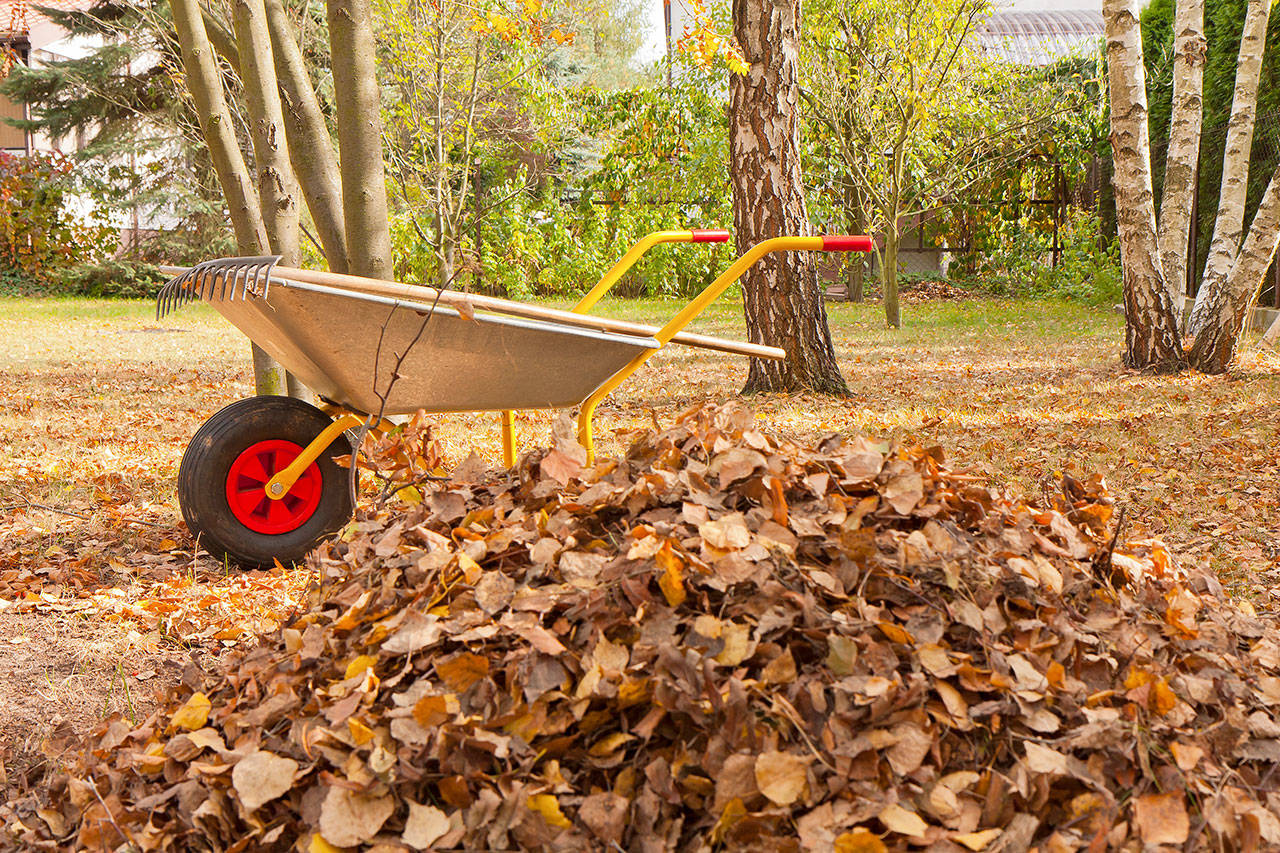Leaves of red, yellow, orange and green color the autumn landscape with their vibrant, dramatic hues, compelling us to pull on soft, warm sweaters, pour a mug of hot cider and curl up with a good book. But when they leave their branchy homes and gently sway to the ground, the compulsion to grab a rake and head outdoors for hours of back-breaking labor erases the tranquility almost immediately. Why not just let them be?
For starters, if left in place until spring, those leaves will smother your lawn, depriving it of sunlight and air. And when the soggy, matted debris is cleared away, you’ll be left with dead patches that will require reseeding. And that’s the best-case scenario: Diseases like snow mold and brown patch, and all sorts of fungi thrive between leaf and lawn, and you’ll find dealing with the aftermath is even more burdensome than raking would have been.
But there is one way you can leave your leaves and have your lawn, too: Mulch them. This is easier than it sounds, as it simply requires running your lawn mower over the leaves to shred them into little bits. Those bits will work their way between grass blades to the soil line, where they’ll gradually decompose and even add nutrients to improve the health of your turf. If there are too many to leave on the lawn, you can run the mower over them and move the resulting mulch to your garden beds, where they’ll serve the same function.
Mulching leaves isn’t only easier than raking — it’s more environmentally sound. Bagged-up yard debris adds nearly 33 million tons of solid waste to U.S. landfills each year, according to the Environmental Protection Agency. And its decomposition under those conditions (without adequate oxygen) can result in a release of methane gas, which tends to heat up when exposed to sunlight and can result in a too-warm atmosphere — and that’s not good for plants, wildlife or us.
Another problem caused by ignoring your leaves is that many of them would be carried by wind to our waterways, where they’d release excess nutrients and can throw the whole ecosystem out of balance.
If you aren’t inclined to chop up leaves with your lawn mower, you might consider making leaf mold, an organic soil amendment and mulch that’s especially useful in sandy soils due to its high moisture content. Simply create a pile of leaves, water it lightly and cover loosely with a tarp. Visit it once or twice over winter, stirring it up a bit. Come spring, you’ll have partially decomposed nutrient-rich matter to add to garden beds and borders, or to sieve through steel mesh and add to potting mix. True leaf mold takes at least a year to develop, but this quick version will continue to break down after it’s applied. It’s almost like a shortcut to compost.
Speaking of compost, that’s another lovely use for autumn leaves. Compost is the single best additive available for improving any type of soil. It improves the water-retention of sandy soil, improves the drainage of clay and imparts a bounty of nutrients. It’s no wonder gardeners call it black gold.
There are two components that make up compost: nitrogen-rich “greens,” such as fresh grass clippings, coffee grounds and fruit and vegetable scraps, and carbon-rich “browns,” such as newspapers, twigs, dryer lint and all those autumn leaves. The best compost is composed of a ratio of three parts “browns” to one part “greens.” (Never include fats, like meat or fish table scraps, dairy products, oils, etc., diseased plants or weeds that have gone to seed in your pile. And never add materials that don’t decompose, such as plastic or glass. Bird and rabbit droppings, and horse manure are OK, but kitty litter and dog poop are not. As a rule of thumb, excrement from carnivores is off-limits.)
To “cook” up a batch of compost, you’ll need a place to do it. Options range from just piling up compost ingredients in a far corner of the backyard, to homemade contraptions that can be as utilitarian as a circular chicken-wire pen staked into the ground, to purchased bins or tumblers that can cost anywhere from $50 to $500, depending on how fancy you want to get.
Add your brown and green ingredients, and keep the pile slightly moist, sprinkling lightly with a hose whenever you add to it or notice it drying out. You can add to it all year long.
As ingredients break down, bacteria will heat the center of the pile first, so it’s important to mix or turn the heap regularly to ensure even decomposition. This can be done with a pitchfork or garden spade on an open pile. Tumblers have a crank or weighted design that requires less exertion, but depending on the size and design of the unit, it still might require some muscle.
Finished compost can be added to new garden beds or vegetable plots about a month before planting, sprinkled over the lawn and gently raked in, added by the handful to planting holes or used as a top dressing around established plants, trees and shrubs.
Talk to us
> Give us your news tips.
> Send us a letter to the editor.
> More Herald contact information.

























